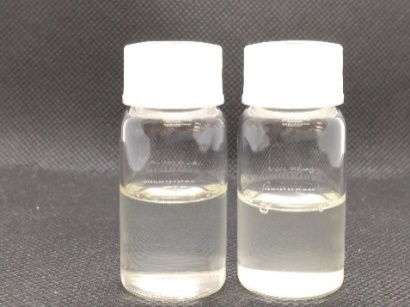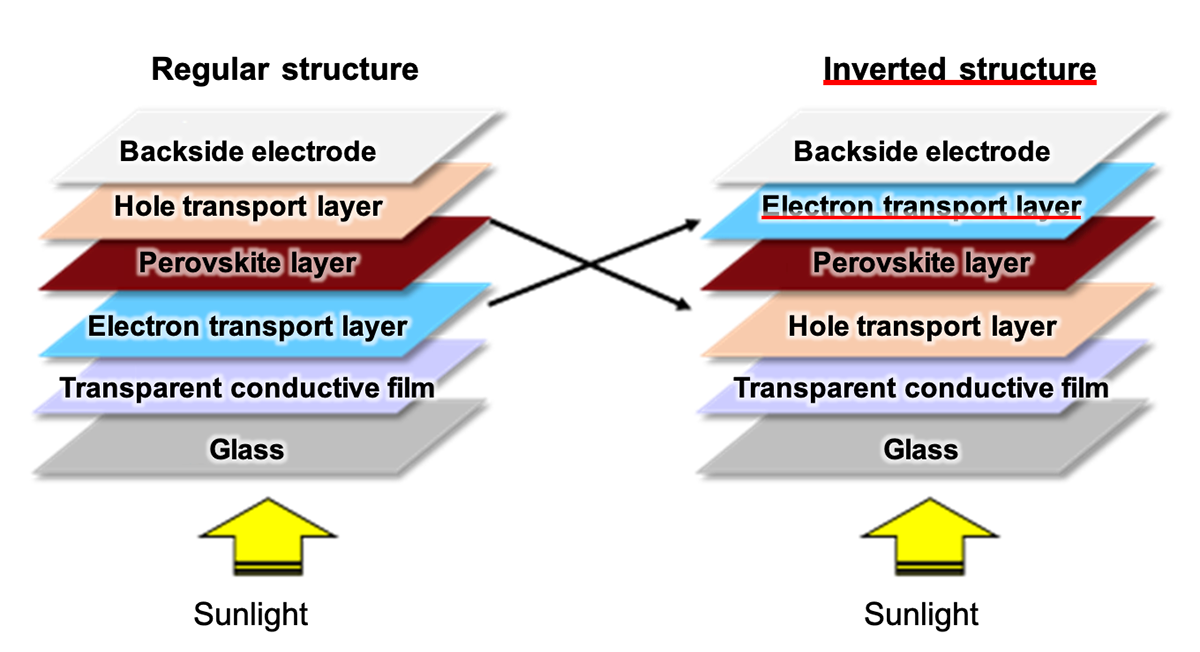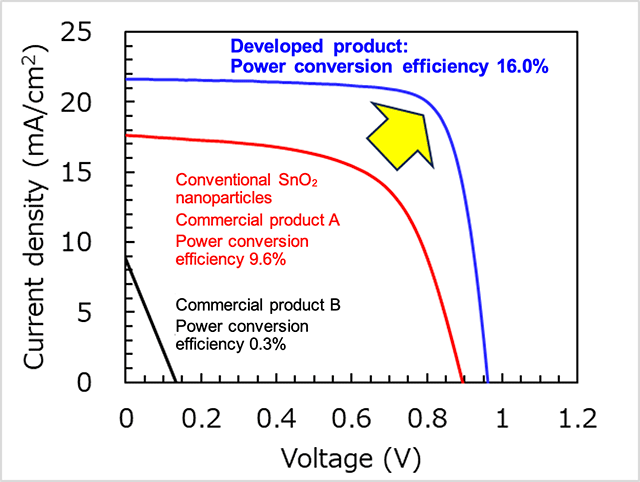News
March 24, 2025
Mitsubishi Materials Corporation
EneCoat Technologies Co., Ltd.
Developed an Ink for Electron Transport Layer Deposition That Improves the Power Conversion Efficiency of Perovskite Solar Cells
- Approximately 1.5 times higher power conversion efficiency than conventional inks achieved -
Mitsubishi Materials Corporation ("MMC") and EneCoat Technologies Co., Ltd. (headquartered in Kyoto, Japan; "EneCoat Technologies") have jointly conducted research and development of an electron transport layer, a component of perovskite solar cells, and developed a coating-type ink for film deposition that achieves approximately 1.5 times higher power conversion efficiency than conventional inks.
In recent years, perovskite solar cells have been attracting attention in the renewable energy field because of their high efficiency and low cost, as well as their light weight and flexibility, making them suitable for locations that did not allow easy installation. Durability and stability, which were previously considered issues, have also been improved through technological advances, and efforts toward commercialization are actively underway as the next generation of solar cells.
Perovskite solar cells have two types of structure depending on the material used for deposition: regular structure and inverted structure. The focus is now on the inverted structure for reasons of ease of manufacture and durability, and this structure requires the formation of a film called an "electron transport layer (*1)" on top of the perovskite layer without causing damage. Although fullerene (C60), a carbon-based material, has conventionally been deposited by a vacuum process, research and development on low-cost materials and new deposition methods are underway for commercialization. In addition, inks for the electron transport layer are required to prevent erosion on the perovskite layer, ensure ink dispersion (coatability), and provide uniformity and adhesion after deposition.
- (*1)
- Material that transports, from holes and electrons generated in the perovskite layer, only electrons to the current collector plate
 Figure 2: Newly developed tin oxide nano-ink
Figure 2: Newly developed tin oxide nano-ink
The MMC Innovation Center has been commissioned by EneCoat Technologies, which was entrusted with the NEDO (*2) Green Innovation Fund Project, to develop an electron transport layer forming material that employs a coating-type process with excellent manufacturing cost, and has developed a new ink for film deposition.
- (*2)
- New Energy and Industrial Technology Development Organization
Although the coating-type process is non-vacuum and cost-effective, the solvent in the deposition ink damages the perovskite layer and, in a non-damaging organic solvent, nano-sized (of 10-9 m order) tin oxide (SnO2) agglomerates and does not adhere well to the perovskite layer, which posed an issue. The newly developed coating-type ink for the deposition of the electron transport layer coats the surface of tin oxide nanoparticles with an appropriate material to successfully disperse them in an organic solvent without agglomerating them, allowing formation of a dense coating film with sufficient adhesion to the perovskite layer. This allows the electrons produced from the perovskite layer to be efficiently transported to the metal electrode. By adopting this new technology, a high power conversion efficiency of 16.0%, approximately 1.5 times higher than that of conventional inks, has been achieved.
Figure 3: Performance characteristics graph (current density-voltage curves)
(Click the picture to see the enlarged image)
This achievement was presented at the Asia-Pacific International Conference on Perovskite, Organic Photovoltaics and Optoelectronics (IPEROP25), an international conference held on January 20, 2025, at Kyoto University Uji Campus.
MMC and EneCoat Technologies will continue to develop the process for applying the deposition ink, aiming for early commercialization for large-area perovskite solar cells.
This achievement was the result of a project (JPNP21016) funded by the New Energy and Industrial Technology Development Organization (NEDO), a national research and development agency.
<Contact details for inquiries>
Corporate Communications Dept.
+81-3-5252-5206
EneCoat Technologies Co., Ltd.
E-mail: info@enecoat.com

